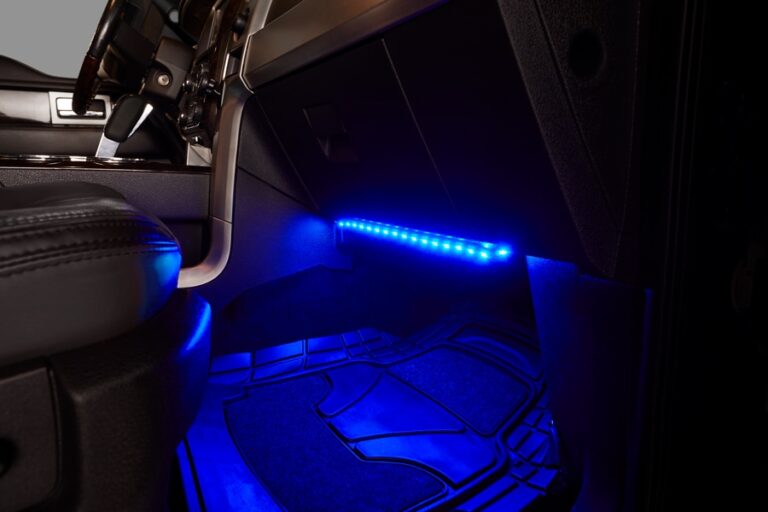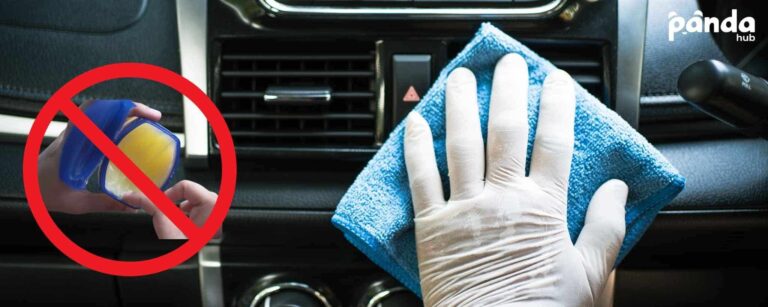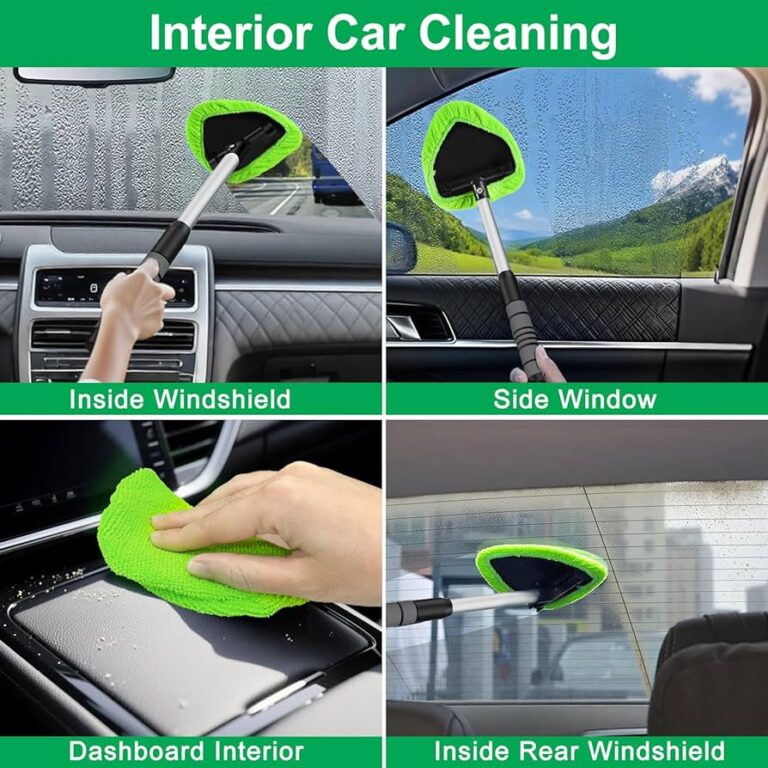Have scratches on your plastic car interior that just won’t go away? You’re not alone, and the good news is, fixing them is easier than you might think.
These scratches can make your car look older and less cared for, but with the right steps, you can restore that smooth, clean look in no time. Keep reading to discover simple, effective ways to get those scratches out and make your car’s interior shine like new again.
Your car deserves it—and so do you.

Credit: www.reddit.com
Common Causes Of Interior Scratches
Scratches on plastic car interiors happen often. They can make your car look old and worn out. Understanding what causes these scratches helps you prevent and fix them better.
Plastic surfaces inside cars are sensitive. Everyday actions and objects can leave marks or scratches. Some causes are common and easy to avoid once known.
Accidental Contact With Sharp Objects
Keys, pens, and tools can scratch plastic surfaces. Even small sharp items cause visible damage. Careless handling or dropping these objects inside the car leads to scratches.
Friction From Bags And Clothing
Rough fabrics or zippers rub against plastic parts. Constant rubbing over time wears down the surface. Heavy bags with metal parts often scrape the interior.
Pet Claws And Movements
Pets inside the car can scratch plastic panels. Their claws are sharp and catch on surfaces easily. Jumping or moving around raises the risk of scratches.
Improper Cleaning Tools Or Methods
Using harsh brushes or abrasive cloths damages plastic. Strong chemicals may degrade the finish. Cleaning with the wrong tools leaves fine scratches behind.
Sunlight And Heat Exposure
Heat makes plastic brittle and prone to cracking. Sunlight fades and weakens surfaces over time. Brittle plastic scratches more easily when touched or rubbed.
Materials Needed For Scratch Removal
Removing scratches from plastic car interiors needs the right tools. Using proper materials makes the task easier and safer. The materials protect your car’s surface and help hide scratches better.
Gathering these items before starting saves time and effort. Each material has a specific role in the scratch removal process. Knowing what to use helps you get better results.
Microfiber Cloths
Soft microfiber cloths clean and buff the plastic gently. They reduce the risk of adding new scratches. Use them to apply polish or clean the area before repair.
Plastic Polish Or Scratch Remover
Special plastic polish helps to smooth out small scratches. It works by filling in and blending scratches with the plastic surface. Choose a product made for car interiors.
Sandpaper (fine Grit)
Fine grit sandpaper, like 2000 to 3000 grit, smooths deep scratches. Use it carefully to avoid damaging the plastic. Wet sanding is often best to reduce heat and dust.
Plastic Cleaner
Plastic cleaner removes dirt and oils before starting the repair. Clean surfaces let the polish or scratch remover work better. Use a cleaner safe for car interior plastics.
Water Spray Bottle
A water spray bottle keeps the surface wet during sanding. This helps prevent overheating and dust buildup. Light, even spraying works best for smooth sanding.
Cleaning The Affected Area
Cleaning the affected area is the first step to remove scratches from plastic car interiors. Dirt and dust can make scratches look worse. Removing these particles helps in seeing the real damage. It also prepares the surface for repair products.
Start by using a soft cloth to wipe the area gently. Avoid rough fabrics that can cause more scratches. Use mild soap mixed with water to clean the surface. This removes oils and grime that stick to the plastic.
After cleaning, dry the area with a clean cloth. Make sure no moisture is left. This prevents water spots and helps repair materials stick better. A clean and dry surface is easier to work with for the next steps.
Use A Soft Cloth Or Microfiber Towel
Choose a soft cloth or microfiber towel for cleaning. These materials do not scratch the plastic. They pick up dirt without rubbing it into the surface. Avoid paper towels, which can be too rough.
Apply Mild Soap And Water
Mix mild soap with warm water in a bowl. Dip the cloth in the solution and wring it out. Gently wipe the scratched area to remove dirt. Do not soak the plastic; use a damp cloth only.
Dry The Surface Thoroughly
Use a dry microfiber cloth to remove all moisture. Pat the surface instead of rubbing hard. Ensure the area is completely dry before applying any scratch repair products. This helps the repair last longer.

Credit: www.reddit.com
Using Heat To Reduce Scratches
Scratches on plastic car interiors can be annoying. Heat can soften the plastic surface. This makes scratches less visible. Using heat is a quick and easy method to reduce scratches without harsh chemicals.
Applying gentle heat helps the plastic regain its smooth look. It works best on shallow scratches. Deep scratches may need more care or other treatments.
How To Use A Hair Dryer Safely
Use a hair dryer on low or medium heat. Keep the dryer 6-8 inches away from the plastic. Move the dryer in small circles over the scratch. Heat the area for 30 to 60 seconds. Stop if the plastic feels too hot.
Using A Heat Gun For Better Results
Heat guns give more heat than hair dryers. Set the heat gun to a low setting. Hold it 8-10 inches from the plastic surface. Move the heat gun slowly over the scratch. Do not stay in one spot too long.
Cooling And Finishing Touches
Let the plastic cool naturally after heating. Avoid touching the area while it cools. Use a soft cloth to gently buff the surface. This helps blend the scratch with the rest of the plastic.
Applying Plastic Polish And Scratch Remover
Applying plastic polish and scratch remover helps restore your car’s interior. These products smooth out scratches and bring back shine. Using the right method can make plastic surfaces look almost new again.
Start by cleaning the scratched area well. Dirt or dust can cause more damage during polishing. Use a soft cloth and mild soap. Dry the surface completely before applying any product.
Choosing The Right Plastic Polish
Pick a polish made for plastic surfaces. Avoid harsh chemicals that can damage the car interior. Check product labels to find those safe for your car’s plastic. Small amounts often work best to avoid buildup.
How To Apply Scratch Remover
Apply a small amount of scratch remover on a soft cloth. Rub it gently in circular motions over the scratch. Use light pressure to avoid making the scratch worse. Continue until the scratch starts to fade.
Finishing Touches For Best Results
After polishing, wipe the area with a clean cloth. Remove any leftover product to prevent streaks. Let the surface dry fully before touching it again. Repeat the process if the scratch remains visible.

Credit: www.reddit.com
Diy Methods For Minor Scratches
Minor scratches on your plastic car interior can be fixed easily at home. Simple household items can restore the smooth surface quickly. These DIY methods save money and time compared to professional repairs.
Here are three effective ways to reduce or remove small scratches from plastic parts inside your car.
Toothpaste Technique
Use a small amount of white, non-gel toothpaste. Apply it to a soft cloth or cotton ball. Rub the scratch gently in a circular motion for about 30 seconds. Wipe off the excess toothpaste with a damp cloth. Repeat if necessary until the scratch fades.
Baking Soda Paste
Mix baking soda with water to create a thick paste. Apply the paste to a microfiber cloth. Gently rub the scratched area in circles. Clean the area with a damp cloth to remove residue. Baking soda works as a mild abrasive to smooth the surface.
Furniture Polish Application
Choose a furniture polish suitable for plastic surfaces. Spray a small amount on a clean cloth. Rub the polish over the scratch in a circular motion. Let it sit for a few minutes, then buff with a dry cloth. This method hides scratches and adds shine.
Professional Products And Tools
Removing scratches from plastic car interiors can be tricky without the right tools. Professional products and tools make this task easier and more effective. These items are designed specifically for plastic surfaces in cars. They help restore the look without causing damage. Using the correct product improves results and saves time.
Plastic Scratch Remover Kits
Scratch remover kits contain special compounds that fill and smooth scratches. They often include a polishing pad and instructions. These kits work well on light to medium scratches. They help blend the scratch with the rest of the surface. Kits are affordable and easy to use for beginners.
Microfiber Cloths And Applicators
Microfiber cloths are soft and gentle on plastic surfaces. They prevent new scratches during cleaning or polishing. Applicator pads help apply products evenly. Using the right cloth and applicator improves the finish. They remove excess product and buff the surface smoothly.
Plastic Polish And Cleaner
Plastic polish removes fine scratches and restores shine. Cleaners remove dirt and oils that hide scratches. Both products prepare the surface for better scratch repair. Polishes often contain mild abrasives or fillers. Clean plastic makes repair products work better and last longer.
Heat Guns And Buffing Machines
Heat guns soften plastic to help reduce scratch visibility. They must be used carefully to avoid damage. Buffing machines speed up the polishing process. They provide consistent pressure and motion. These tools are best for deeper scratches and larger areas.
Preventing Future Scratches
Preventing future scratches on your car’s plastic interior keeps it looking fresh and new. Small scratches can add up and make the interior look old. Taking simple steps helps avoid damage and saves money on repairs.
Use Protective Covers And Mats
Place covers on seats and mats on floors to stop sharp objects from scratching surfaces. Covers made of soft fabric protect plastic from keys, pens, and other items. Mats catch dirt and debris that can cause scratches.
Clean With Soft Cloths Only
Use microfiber or soft cloths to clean plastic parts. Hard brushes or rough sponges can create tiny scratches. Clean gently and avoid scrubbing too hard to keep surfaces smooth.
Avoid Placing Sharp Objects Inside
Keep sharp tools, keys, and other pointed items away from plastic parts. Store them in compartments or bags. This reduces the chance of accidental scratches.
Apply A Plastic Protectant
Use a plastic protectant to create a thin barrier on the surface. It helps reduce scratches and keeps plastic shiny. Apply as directed and reapply regularly for best results.
Frequently Asked Questions
How Can I Remove Minor Scratches From Plastic Car Interiors?
Use a plastic polish or a mild abrasive cleaner. Apply gently with a microfiber cloth in circular motions. Wipe clean and repeat if needed. This method effectively reduces minor scratches without damaging the surface.
What Household Items Remove Scratches From Car Plastic Panels?
Toothpaste or baking soda mixed with water can help. Apply a small amount on a cloth and rub gently. These mild abrasives smooth out light scratches safely and cost-effectively.
Is It Safe To Use Heat To Fix Plastic Car Scratches?
Yes, using a heat gun cautiously can reduce scratch visibility. Keep the heat low and move evenly to avoid melting. Heat softens plastic, allowing it to blend and minimize scratches.
Can Diy Scratch Removers Damage Plastic Car Interiors?
Some DIY products may be too abrasive and cause further damage. Always test on a small area first. Use products specifically designed for automotive plastic to ensure safety and effectiveness.
Conclusion
Scratches on plastic car interiors can look bad but are fixable. Use gentle cleaners or scratch removers for small marks. For deeper scratches, sanding and polishing work well. Always test products on a small area first. Take your time and be patient during the process.
Regular care keeps your car’s interior looking fresh. Simple steps can make a big difference. Keep your car interior neat and scratch-free for a better driving experience.



